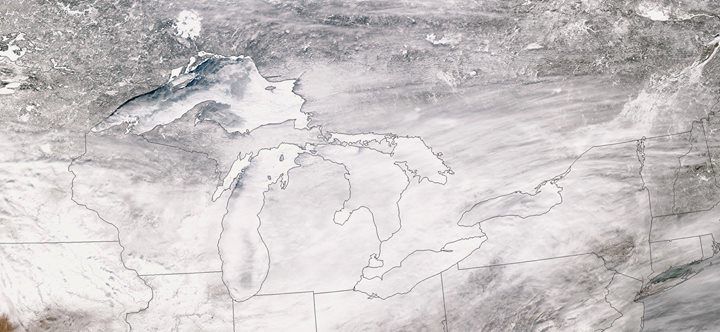Almost Completely Frozen, Great Lakes Near Record

Overall, winters may become milder as the planet warms, but this season has been a stunningly cold outlier for eastern North America. Case in point? The frozen Great Lakes.
Yesterday (March 4), the Great Lakes hit 91 percent ice cover, according to the Great Lakes Environmental Research Laboratory. That's the most ice since the record of 94.7 percent was set in 1979, the lab said in a statement.
Except for Lake Ontario, nearly all the Great Lakes are frozen stiff, just like everyone on the East Coast. In fact, if the months of below-normal temperatures and freezing winds persist, the Great Lakes could meet or break their 1979 record, the lab said. The ice hasn't been this widespread since 1994, when 90.4 percent of the Great Lakes were under ice. The average ice cover is usually just above 50 percent, and only occasionally passes 80 percent, according to the lab.
The freeze could be good news for the region. Last year saw record low water levels in the Great Lakes, but the ice cover will help lessen evaporation, one of the biggest factors in lake water loss.
The ice is also thick enough for people to reach the Apostle Islands' ice caves on Lake Superior for the first time since 2009. The National Park Service opened the ice caves to visitors in mid-January.
A series of Arctic blasts linked to a loopy jet stream is responsible for the icy effect across the lakes. The polar air, dipping down from the high latitudes, has repeatedly flooded central and eastern North America, chilling much of Canada and the United States.
Editor's note: This story was updated on March 7 to correct the year of the ice record to 1979.
Sign up for the Live Science daily newsletter now
Get the world’s most fascinating discoveries delivered straight to your inbox.
Email Becky Oskin or follow her @beckyoskin. Follow us @livescience, Facebook & Google+. Original article on Live Science.











